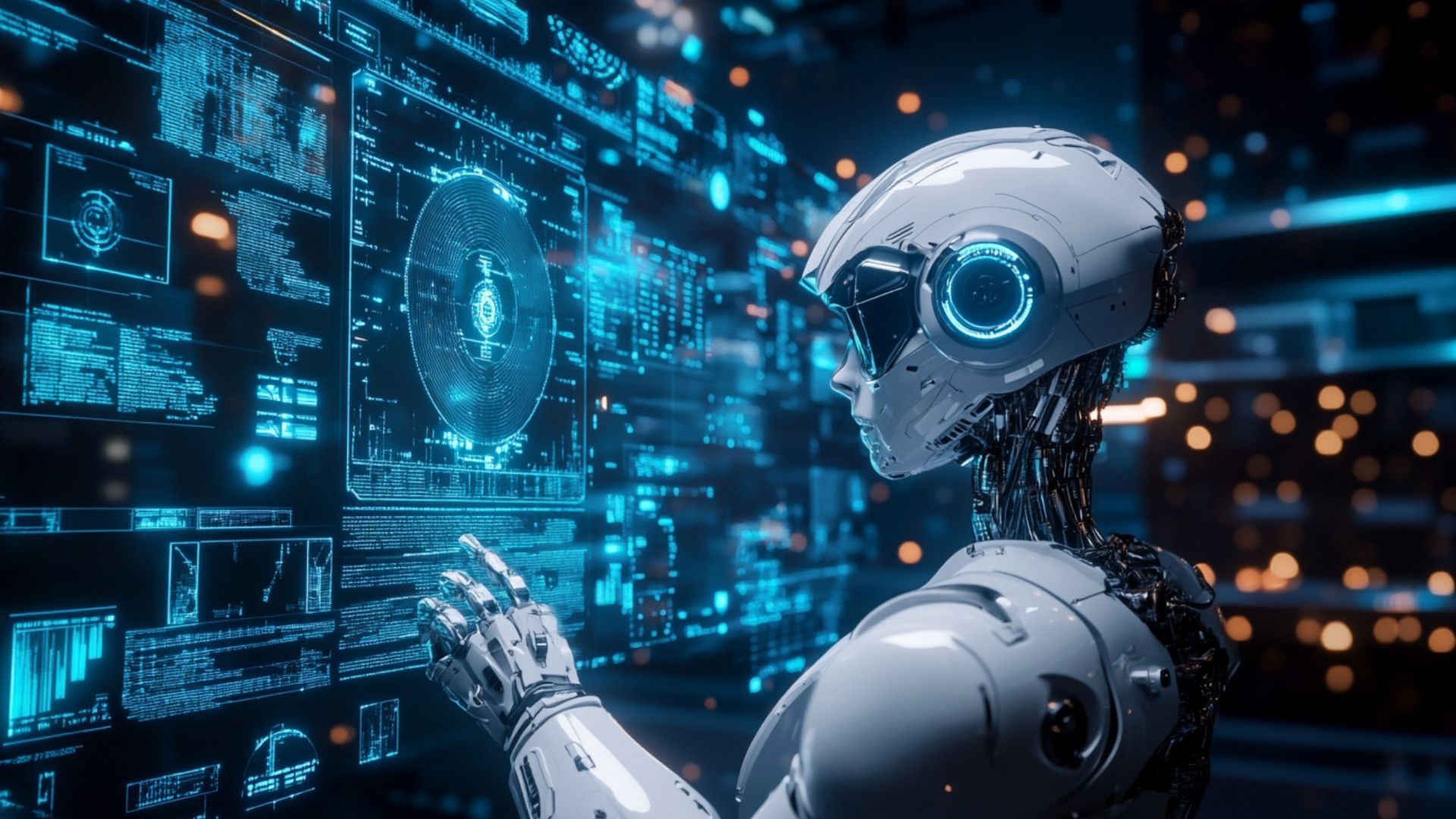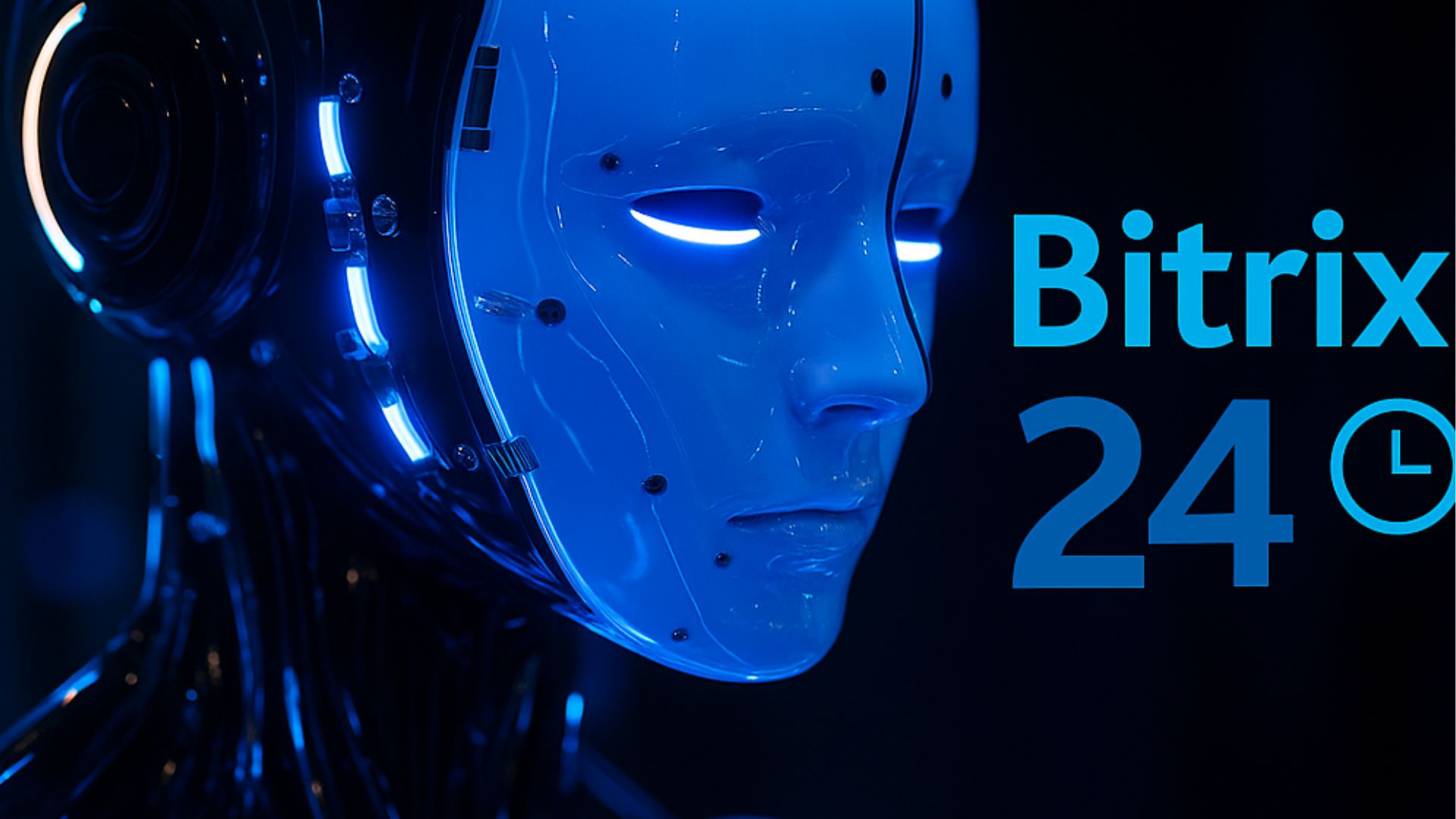The Evolution and Techniques of Machine Learning

Machine learning has revolutionized numerous fields and industries. Machine learning (ML) is one of the most valuable technologies available today, as these systems can improve their performance without explicit programming. ML encompasses a wide range of methods and approaches, from classical statistical techniques to modern neural networks. It's important to understand that ML is not a universal solution for all problems. The success of any model depends on the quality of data, proper algorithm selection, and careful parameter tuning.
We will review the key stages of ML development, beginning with its inception and continuing through to its modern achievements. We'll examine the evolution of machine learning by tracing its historical growth and exploring the key technical methods that define the field today. ML advances through breakthroughs in algorithms and computing power. Let's explore the techniques driving its transformative impact across various sectors and highlight its increasing significance.
A Brief History of Machine Learning
The history of ML dates back to the 1950s, with early efforts in artificial intelligence. Alan Turing explored machine intelligence, proposing systems that could mimic human reasoning. In 1956, the Dartmouth Conference officially launched the field of AI, sparking interest in learning algorithms. The 1960s saw the emergence of symbolic learning and rule-based systems, such as the Logic Theorist. By the 1980s, decision trees gained traction, enabling pattern recognition in data.
The ML timeline advanced significantly in the 1980s and 1990s, particularly with the development of neural networks. Backpropagation, introduced in 1986, allowed networks to learn complex patterns, though computational limits initially hindered progress. In recent years, platforms like DataRobot have accelerated the adoption of automated machine learning tools, making advanced algorithms more accessible to organizations that were previously limited by hardware constraints.
Key milestones in the ML timeline:
- 1950s. Early AI concepts and Turing's work on machine intelligence
- 1960s. Symbolic learning and rule-based systems like Logic Theorist
- 1980s. Decision trees and backpropagation for neural networks
- 1990s. Neural network advancements while computational limits persisted
- 2000s. Big data emergence, deep learning breakthroughs, and AlexNet's 2012 success
The 2000s marked a turning point with the rise of big data. Improved computing power and vast datasets fueled the evolution of machine learning, enabling deep learning breakthroughs. In 2012, deep neural networks achieved remarkable advances in image recognition, driven by breakthroughs such as AlexNet. Today, ML powers applications ranging from autonomous vehicles to medical diagnostics, with ongoing innovations continually shaping its future.
Core Principles of Machine Learning
ML differs from traditional programming in that it learns patterns from data rather than following fixed rules. These systems detect patterns and make predictions, with model generalization ensuring good performance on new, unseen data. This adaptability powers applications across business, healthcare, and technology. The machine learning process involves gathering data, training models, and continuously improving predictions as models evolve by learning from mistakes and new information.
Supervised learning uses labeled data to map inputs to outputs, such as predicting stock prices using historical trends. Common methods include regression and classification. Unsupervised learning uncovers patterns in unlabeled data, grouping similar items using clustering or dimensionality reduction techniques. Reinforcement learning optimizes actions through trial and error, with agents learning by earning rewards, as seen in robotics or gaming AI. These approaches drive the evolution of machine learning.
Key steps in the ML process:
- Data Preparation. Collect and clean relevant data
- Model Selection. Choose appropriate algorithms for training
- Training. Learn patterns from the prepared data
- Validation. Test models on unseen data
- Deployment. Implement models for real-world solutions
ML's reliance on vast amounts of data and its ability to recognize complex patterns distinguishes it from traditional rule-based systems. These core capabilities enable ML models to adapt and improve over time without requiring explicit programming for every scenario. As a result, this technology is revolutionizing task automation and accelerating innovation and efficiency across industries including healthcare, finance, manufacturing, and logistics.
Supervised vs Unsupervised Learning Explained
Supervised and unsupervised learning are two fundamental approaches in the machine learning process. Supervised learning trains models on labeled data, mapping inputs to specific outputs. For instance, spam filtering uses emails tagged as "spam" or "not spam" to classify new incoming emails. Algorithms such as logistic regression and support vector machines excel in this context. Unsupervised learning analyzes unlabeled data to discover hidden patterns, such as customer segmentation that groups shoppers by purchasing habits using clustering methods.
The stages of machine learning vary between these approaches. Supervised learning requires labeled data, which demands more preparation but delivers precise predictions. Unsupervised learning requires minimal data preparation and produces clusters or associations, though the results may be less clearly defined. Supervised learning excels in tasks such as fraud detection, yielding clear, actionable outcomes. Unsupervised learning is well-suited for exploratory tasks like identifying market trends and discovering hidden patterns. Both approaches drive impactful applications but serve distinct purposes.
Key stages of machine learning:
- Data Gathering. Collect labeled (supervised) or unlabeled (unsupervised) data
- Data Cleaning. Prepare and format data for analysis
- Training. Use algorithms to detect patterns in the data
- Testing. Validate model performance or pattern coherence
- Deployment. Apply models for predictions or actionable insights
Supervised learning ensures accuracy with labeled data. Unsupervised learning reveals hidden structures without labels. Both are essential to the ML process and address diverse real-world challenges. When exploring these methods, it's common to encounter questions like "Which of these is not a type of training for machine learning?" Understanding these different training approaches is crucial for anyone working in the field.
Reinforcement Learning and Its Unique Role
Reinforcement learning (RL) stands out as a distinct approach in ML. Unlike supervised or unsupervised methods, RL uses an agent that interacts with an environment, selecting actions and observing results while earning rewards or penalties. Through trial and error, the agent learns to maximize long-term rewards by refining its choices over time. This dynamic process, similar to learning through experience, distinguishes RL from other approaches. The stages of machine learning in RL involve setting up environments, defining reward structures, and training agents to optimize decisions.
RL excels in complex, interactive scenarios. In robotics, RL enables machines to master object manipulation by rewarding successful actions. In gaming, AI systems like DeepMind's AlphaStar learn winning strategies through countless simulated games. RL also powers applications in autonomous driving and energy management, thriving in unpredictable environments where traditional approaches fall short.
Key stages of machine learning in RL:
- Environment Setup. Build the system for agent interaction
- Reward Structure. Define clear success metrics
- Action Exploration. Agent tests possible moves and strategies
- Policy Learning. Adjust actions based on received feedback
- Implementation. Deploy the trained agent in real-world scenarios
RL's strength lies in solving sequential decision-making problems where actions influence future outcomes. While supervised learning relies on labeled data, RL learns through trial and error, receiving feedback through rewards or penalties. This makes it especially effective in dynamic environments such as robotics, gaming, autonomous vehicles, and resource management. RL's growing impact across these fields underscores its unique and essential role in advancing machine learning, particularly for tasks requiring long-term strategy and continuous improvement.
Key Machine Learning Techniques and Algorithms

ML works by leveraging algorithms to uncover patterns in data. Different methods suit specific tasks, balancing accuracy and efficiency. What language is machine learning written in? Python is the primary programming language for machine learning due to libraries such as scikit-learn, TensorFlow, and PyTorch. R, Java, and C++ are also commonly used. Below are key algorithms, their applications, and their respective strengths and weaknesses:
| Algorithm | Use Case | Strength | Weakness |
| Decision Trees | Loan approval | Clear and interpretable | Prone to overfitting |
| SVM | Sentiment analysis | Effective in high dimensions | Scales poorly with large datasets |
| k-NN | Image classification | Intuitive and flexible | Computationally intensive |
| Naive Bayes | Email filtering | Fast and text-friendly | Assumes feature independence |
| Neural Networks | Speech recognition | Highly accurate and adaptable | Resource-intensive |
Decision trees divide data into branches for decision-making, making them ideal for tasks such as loan approval. They're highly interpretable but can overfit to training data. Support vector machines (SVMs) create decision boundaries to classify data, excelling in sentiment analysis and high-dimensional problems, though they struggle with very large datasets.
K-nearest neighbors (k-NN) makes predictions based on nearby data points and is commonly used in image classification. It's simple and intuitive but computationally slow for large datasets. Naive Bayes uses probability calculations for tasks like email filtering, proving efficient for text data while assuming feature independence.
Neural networks power deep learning applications, dominating fields like speech recognition. They require significant data and computing power but deliver superior results for complex problems. These methods illustrate how machine learning works and enables data-driven solutions, with Python's robust ecosystem making it the top choice for implementing these algorithms.
Deep Learning and Neural Networks
Deep learning revolutionizes machine learning by advancing beyond traditional approaches. While traditional ML relies on manual feature selection, deep learning utilizes neural networks with multiple layers to automatically extract features from raw data. These layers process information hierarchically, enabling the detection of sophisticated patterns. Machine learning systems driven by deep learning excel in tasks such as object detection and language understanding, often outperforming traditional methods when handling complex, unstructured data.
Neural networks consist of input, hidden, and output layers. Neurons in each layer process data by applying weights and biases, then pass results forward through the network. Training utilizes backpropagation to adjust parameters, optimizing performance with algorithms such as stochastic gradient descent. Deep learning requires large datasets and powerful hardware, often GPUs, to handle the computational intensity. This process allows models to generalize effectively across diverse applications.
Key elements of how deep learning works:
- Multi-layered Networks. Layers extract features automatically without manual engineering
- Backpropagation Training. Adjusts weights systematically to minimize errors
- High Computational Power. GPUs handle large-scale processing requirements
- Automatic Feature Learning. Eliminates the need for manual feature engineering
- Versatile Applications. Dominates image recognition, NLP, and robotics
Key applications include image recognition, where convolutional neural networks (CNNs) play crucial roles in medical imaging diagnostics. Natural language processing (NLP) commonly uses transformers and recurrent neural networks (RNNs) to drive chatbots, translation services, and voice assistants. Machine learning in autonomous vehicles utilizes deep learning to analyze sensor data for navigation purposes. These use cases demonstrate deep learning's strength in processing high-dimensional data.
Deep learning's ability to scale and adapt makes it a cornerstone of modern AI, enabling machine learning systems to learn directly from raw data. This technology drives innovation across healthcare, automotive, and technology industries, continuously expanding the boundaries of what's possible with artificial intelligence.
Ensemble Methods and Boosting Techniques
Ensemble methods combine multiple models to enhance prediction accuracy and increase robustness compared to single models. They leverage diverse learners to reduce errors and improve overall performance, making them popular in machine learning competitions and real-world applications. Key techniques include Random Forests, Gradient Boosting, and XGBoost:
- Random Forests. This method builds multiple decision trees, each trained on a random subset of data and features. Predictions are then aggregated (e.g., through majority voting for classification). This approach reduces overfitting through diversity and averaging. Strengths. handles high-dimensional data well, resists overfitting, and provides feature importance rankings. It excels in competitions due to its simplicity and consistent accuracy.
- Gradient Boosting. This method sequentially builds decision trees, where each subsequent tree corrects the errors of previous ones by minimizing a loss function (e.g., mean squared error). Machine learning for complex problems thrives here, as it optimizes predictions iteratively. Strengths. delivers high accuracy and offers flexibility with different loss functions. Shows strong performance in structured data competitions.
- XGBoost. An optimized implementation of gradient boosting that enhances speed and scalability with features such as parallelization, regularization, and automated handling of missing data. Robot machine learning works through efficient tree construction and hyperparameter tuning. Strengths. dominates competitions due to exceptional accuracy, speed, and ability to model complex patterns. Widely used in finance, healthcare, and recommendation systems.
Real-World Applications of Machine Learning
ML transforms industries by enabling smarter decision-making and automation. Below are key areas where ML is actively applied, along with practical examples:
- Predictive Analytics. ML analyzes historical data to forecast future outcomes, such as predicting stock market trends and customer churn rates. In healthcare, it anticipates patient readmissions and disease outbreaks. This involves various machine learning process steps including data preparation, model training, validation, and deployment.
- Fraud Detection. ML identifies unusual patterns in real-time, detecting fraudulent transactions with high accuracy. Banks use ML to flag suspicious activities and unusual spending patterns. Models are trained on large datasets containing both normal and fraudulent behaviors to recognize anomalies.
- Recommendation Engines. ML suggests personalized content or products based on user behavior. Amazon and Netflix utilize this technology to recommend items and content, while Spotify tailors music suggestions using listening history data. Choosing the right machine learning model depends on factors such as user data volume, behavior patterns, and desired personalization depth.
- Natural Language Processing (NLP). Enables machines to understand and generate human language. Chatbots handle customer queries using sentiment analysis, while healthcare systems analyze medical notes for better diagnoses. NLP supports text classification, language translation, and content summarization.
Challenges and the Future of Machine Learning
While ML has revolutionized many industries, it still faces several challenges that must be addressed for long-term success and widespread trust. Below are the key challenges and future directions for ML:
Current Challenges:
- Bias in Training Data. ML models learn from data, and if that data contains historical or social biases, the model will replicate them. For example, facial recognition systems may perform poorly on underrepresented demographic groups, undermining fairness and potentially leading to discriminatory outcomes.
- Overfitting and Underfitting. Overfitting occurs when a model performs well on training data but poorly on new data, while underfitting happens when a model is too simple to capture data complexity. Both issues can result from poor choices during machine learning process steps such as model selection and validation.
- Model Explainability. Many models, especially deep neural networks, act as "black boxes" where stakeholders cannot understand how decisions are made. This is particularly problematic in areas such as finance and healthcare, where lack of transparency can slow adoption in regulated industries.
Future Directions:
- AutoML (Automated Machine Learning). This technology simplifies the ML workflow by automating process steps from data preparation to model deployment. It helps non-experts build accurate models while increasing productivity for data science teams.
- Federated Learning. Allows ML models to train across multiple decentralized devices or servers while keeping data local. For example, smartphones can train a model without sending user data to the cloud, enhancing privacy and reducing bandwidth usage. This represents a significant advancement for machine learning applications on edge devices.
- Explainable AI (XAI). Focuses on creating models that provide understandable outputs, enhancing trust and transparency. XAI tools can indicate which features contributed to decisions like loan approvals, which is crucial in areas where accountability is essential.
The future of machine learning holds great promise as this technology will play an increasingly important role in our daily lives, improving service quality and creating new opportunities for innovation. Key focus areas will include developing more interpretable and fair ML systems, along with more sustainable and energy-efficient models. As the field continues to evolve, addressing these challenges while advancing capabilities will be crucial for realizing ML's full potential.


